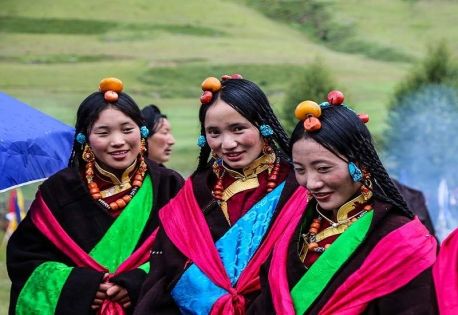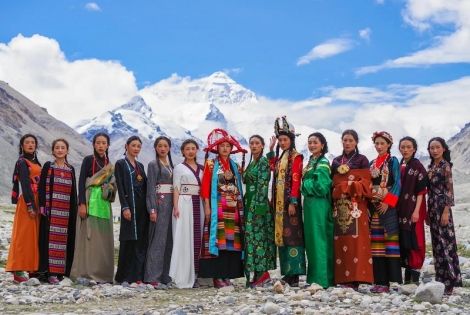What Is Polyandry?
In most societies around the world, monogamy—one husband and one wife—is the norm. However, on the remote Tibetan Plateau, a rare form of marriage known as polyandry, where one woman is married to multiple husbands, has historically existed and continued for centuries in some isolated areas.
In traditional Tibetan society—especially in regions like Ngari (Ali) and parts of Shigatse—a unique family structure called fraternal polyandry was once widespread. This means that a woman would marry two or more brothers, and the group would live together, raise children, and manage the family property collectively.
This form of marriage is exceptionally rare across human cultures and continues to fascinate scholars and travelers alike.

Why Did Polyandry Develop in Tibet?
Although it may seem surprising to outsiders, this marriage system evolved as a practical response to Tibet’s environmental, economic, and cultural conditions:
1. Harsh Environment and Limited Resources
In remote high-altitude areas like Ngari and Nagqu, arable land is scarce, the climate is extreme, and survival is tough.
If every son in a family were to marry separately and divide the land and livestock, the family economy would soon collapse.
2. Preventing Family Property Fragmentation
Tibetan families traditionally practice joint family ownership, with all members sharing herds, land, and housing. Fraternal polyandry allows the household to remain united, preserving resources and reducing costs.
3. Population Control and Social Stability
In a time without modern birth control, this system helped control population growth, easing pressure on limited resources and helping maintain community stability.
4. Religious and Cultural Traditions
Tibetan society is deeply influenced by Tibetan Buddhism and local customs. Buddhism does not strictly enforce monogamy, and fraternal polyandry has long been accepted in rural communities as a practical and culturally valid arrangement.
What Is Life Like in a Polyandrous Family?
In a typical fraternal polyandry household:
A woman usually marries two or three brothers.
All children are considered to belong to the eldest brother, who is the nominal husband.
The brothers take turns living with the wife, with arrangements varying by family.
All property is shared, with no division of land, herds, or income.
Harmony, respect, and cooperation are essential; otherwise, conflicts may arise.
Though this structure may seem complicated to outsiders, many such families in rural Tibet operated smoothly and harmoniously.

Tibetan Women
Does This System Still Exist Today?
With the arrival of modernity, especially after the Democratic Reforms of 1959, China gradually implemented monogamy as the legal standard:
Since 1959, the state recognizes only monogamous marriages.
As younger generations gain education and urban exposure, they increasingly favor love-based marriages and nuclear families.
Fraternal polyandry has significantly declined and is now found only in a few remote rural areas, primarily among older generations.
Nevertheless, as a cultural legacy, polyandry remains a key window into Tibetan traditional society.
Respecting Cultural Diversity
Today, we often think of Tibet in terms of its stunning scenery—Potala Palace, Mount Everest, Nyingchi, Mount Kailash—but behind these majestic landscapes lie centuries-old customs and deeply rooted social structures.
Understanding Tibet’s polyandry system is another way to truly connect with this extraordinary region.
It’s not about curiosity for the exotic, but about respect.Not about judgment, but about understanding.













